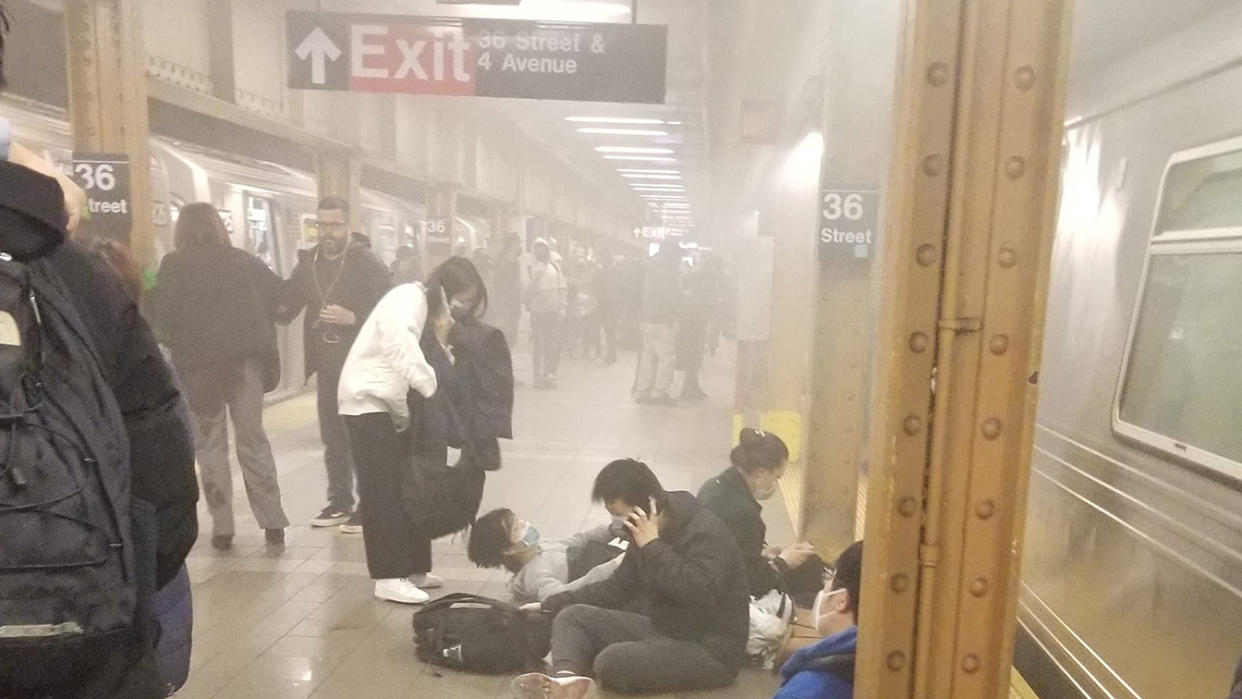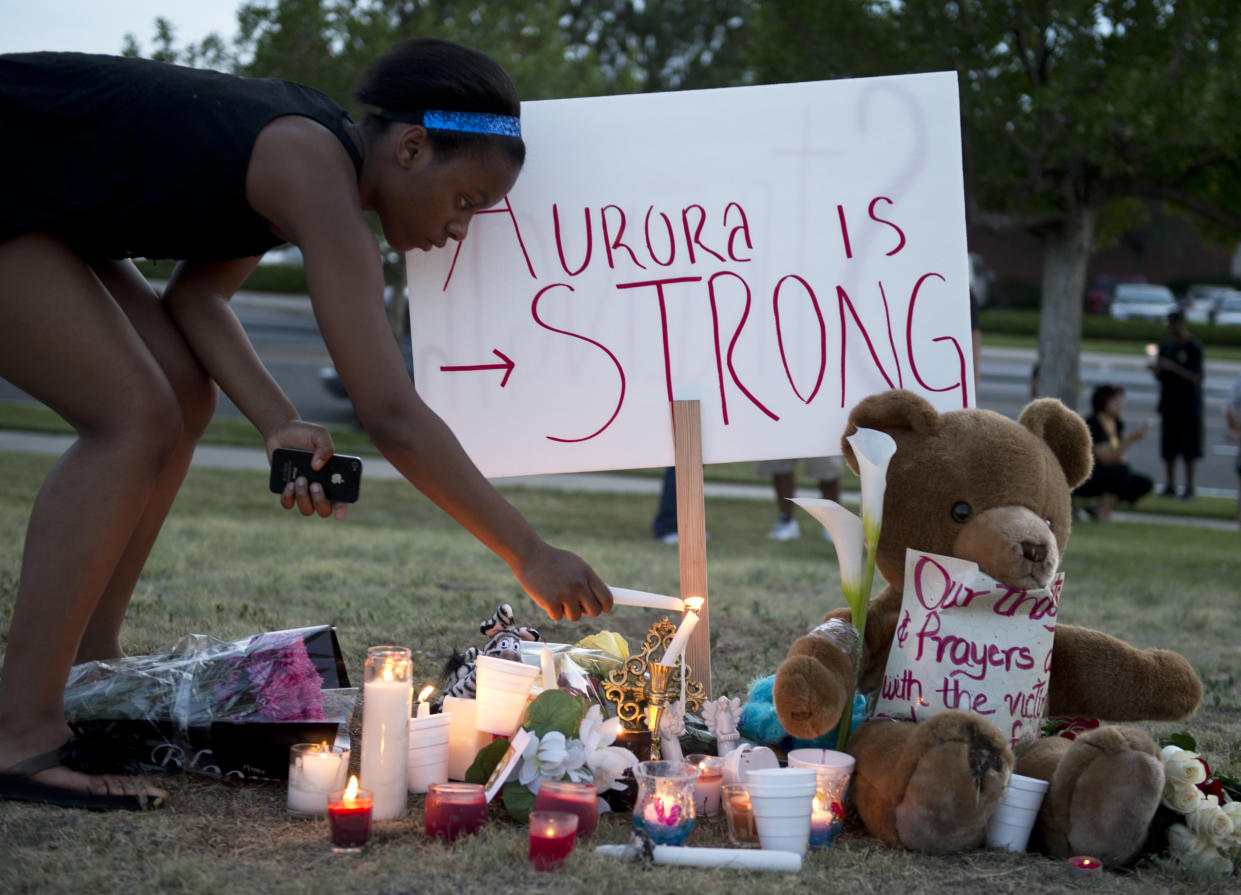Mass shootings across U.S. highlight surge in deadly gun violence
At least 10 mass shootings rocked the U.S. during Easter weekend this year — a sign that gun violence continues to soar across the country after hitting a high during the first year of the pandemic.
In Pittsburgh, two high school students were shot dead and at least eight others were injured at a house party on Sunday. The day before, at a mall in Columbia, S.C., 10 people were shot and two others were injured after at least one person opened fire. These shootings rounded out a holiday weekend that left eight dead and dozens more injured.

In Brooklyn, N.Y., last week, a man opened fire on a subway train, leaving 10 people shot and others injured in the chaos, while in Sacramento, Calif., earlier this month, six people were killed in gang-related violence that saw more than 100 rounds fired, officials said.
In the first four months of 2022 alone, more than 12,000 people died from guns in the U.S., a number that includes both homicides and suicides, according to the Gun Violence Archive.
The pandemic did little to reduce gun violence in America. The Centers for Disease Control and Prevention found that more Americans died of gun-related injuries in 2020 — 45,222 — than in any other year on record. That startling statistic included a record number of gun murders and a near-record number of suicides.
One way to address gun violence — particularly mass shootings — is what’s known as threat assessment, which Mark Follman, the national affairs editor for Mother Jones magazine, breaks down in his new book, “Trigger Points.”
He describes the method of behavioral threat assessment as the tool used to prevent planned attacks — shootings in which the attacker cultivates and plans out the attack over a period of time.
“That’s really the core of the work of threat assessment, is looking at the behaviors and circumstances that lead up to those kinds of attacks, of planning, threatening communications, other forms of behavioral warning signs and identifying patterns within that, to try to then intervene and prevent those kinds of acts from occurring,” Follman told Yahoo News.

Follman said he started researching mass shootings in 2012 and was startled by the lack of data he could find. It was the same year that a gunman opened fire in an Aurora, Colo., movie theater, leaving 12 dead — including a 6-year-old girl — and 70 others injured. In December of that year, another 26 people, 20 of them children, died in a shooting at Sandy Hook Elementary School in Connecticut.
“I started analyzing these cases,” Follman said. “And within a few months, I had started to see a pattern in the cases that ... there’s often a trail of behavioral warning signs that are patterns that are detectable.”
Follman noted that in 2013, U.S. Attorney General Eric Holder “commented to the gathering of the nation’s police chiefs that there was a team at the FBI that had stopped more than 100 mass shootings that year. And that just really turned my head. You know, what is that all about? That sounds really thick.”

He said mass shootings can be very different in nature, with attacks like New York’s subway shooting being characterized as ones that are “thought about and planned.”
“There's this popular theme, this idea that these are crazy people who are just snapping, and going out and committing an attack like that as if it's an impulsive act. But that's not true at all, that's not the case,” Follman said.
New York City Mayor Eric Adams, a former police officer who faces a difficult challenge as crime surges, released a blueprint in January to address the city's gun issue.
“Gun violence is a public health crisis that continues to threaten every corner of our city,” the mayor said. “We pray for all the victims of violence and their families who are suffering, but we are going to do more than pray — we’re going to turn our pain into purpose. Public safety is my administration’s highest priority, which is why we will remove guns from our streets, protect our communities, and create a safe, prosperous and just city for all New Yorkers.”

In California, lawmakers in a state judiciary committee on Tuesday held a hearing on a bill that would allow state citizens to sue gun manufacturers for negligent practices.
One of the bill’s sponsors, Democratic state Assembly member Phil Ting, told the committee: “I think it’s unfair that the toy industry has a lot more liability than the gun industry.”
Nationally, President Biden announced on April 11 that the Department of Justice will crack down on so-called ghost guns — firearms that lack a serial number, are untraceable and can be assembled at home. The White House said there were approximately 20,000 suspected ghost guns reported to the Bureau of Alcohol, Tobacco, Firearms and Explosives last year — which the Biden administration said was a 10-fold increase from 2016 — that were recovered by law enforcement during criminal investigations.

In “Trigger Points,” Follman said he focused on the pervasive problem of school shootings. In one case, he said, a student who was planning a mass shooting was treated with support instead of contempt.
“They determined he’s a pretty serious risk. And so what they do is they extend a lot of close personal support to him very quickly. The idea is to be constructive in the prevention work, especially in a school setting, where I think the opportunity to do that is probably in some ways the most, has the greatest potential.”
When it comes to addressing mass shootings, he said the biggest tool is threat assessment and that it’s not just up to law enforcement but a community effort.
“How do you catch someone like the New York City subway shooter before it’s too late? Here's a guy who, from what we can tell, was living in pretty serious isolation, was kind of a loner moving around. And yet there were people around him who were unsettled by his behavior. Neighbors that we saw reporting on ... family members who were estranged from him. You know, those are the people who are in a position to see warning signs. Then the question becomes, who do they turn to? Or where do they know to get help?”
Cover thumbnail photo: Don Emmert/AFP via Getty Images


